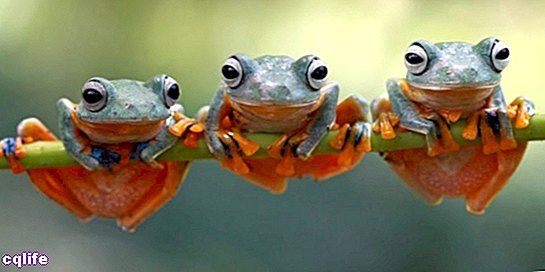We explain what fauna is, its types and the characteristics of wild and domestic fauna. In addition, its relationship with the flora.

What is fauna?
Fauna is the set of living beings animals that inhabit a geographic region determined, forming ecological ties of different kinds and sharing the same geological time. That is, those animals that coexist in a precise place during a weather determined: predators, prey, the parasites, etc. All animals are part of the fauna.
The term "fauna" comes from Latin: it was the name that in ancient Roman worship received the goddess of the fertility of the fields, the woods and the nature. Today it is often used together with flora, which refers to plant life in the same terms.
Fauna can be classified in many different ways, depending on the environment they inhabit or the conditions in which they live. In this way, and broadly speaking, it is often spoken of:
- Jungle fauna. The one that lives in large and dense vegetation of the tropics, such as the jungles South American or African.
- Xerophilous fauna. That which is typical of deserts and arid areas, of little humidity and little vegetation.
- Polar fauna. The one that encompasses the different inhabitants of the region from the Earth's poles and their surrounding area.
- High fauna Mountain. Consisting mostly of birds and other life forms that prefer the heights and cool climate of the mountain tops.
- Marine fauna. The one that lives in seas Y oceans, dedicating the greater portion of its existence to the underwater world.
- Terrestrial fauna. The one that lives on the continental shelf, as opposed to the navy.
- Urban wildlife. The one that is typical of cities and that coexists with the humanity, without necessarily consisting of pets.
Wildlife and domestic fauna
Another way of classifying the fauna is the one that attends to its relationship with the human being, distinguishing between wild and domestic animals:
- Wildlife or wild. Those animals that have not had or have had very little contact with the human being, and are unaccustomed to his presence, so that they do not have established ties with him. They are autonomous animals, accustomed to life in their habitats respective and potentially dangerous for the human being.
- Domestic fauna or domesticated. Those animals that, on the contrary, are accustomed to interacting with humans and have established bonds of coexistence, harmonica or not. In this category are farm animals, for example, as well as companion animals that we have in our homes, and that largely depend on us for their livelihood. The fate of these animals is closely linked to that of the human being.
- Feral fauna.Those animals that were once domestic, but due to a radical change in habitat, returned to the wild and are, in the best of cases, in an intermediate space between the wild and the domestic.
Fauna and Flora

Just as the fauna includes the animal species of a geographic location, the flora includes the plant species and the mushrooms. The concept works in an identical way to that of fauna, distinguishing between the habitat of the species and establishing its relationship with the human being (for example, wheat and barley are domestic species, accustomed to agricultural cultivation; jungle plant species, on the other hand, are not).
Flora and fauna establish very close relationships with each other and are, in ecological terms, inseparable from each other. So everything ecosystem It contains interrelated elements of each, and changes in one often irretrievably alter the other. It is for this reason that there is often talk of the imperative need to preserve the flora and fauna of the ecosystems in the world.
